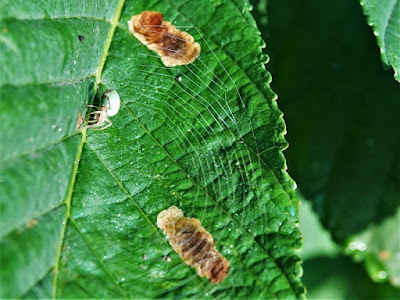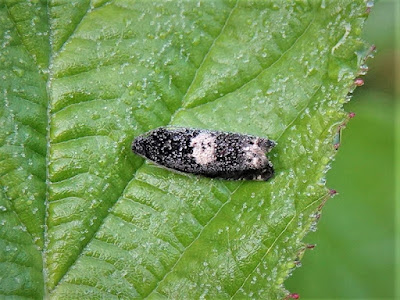13.0°C > 19.0°C: Early mist in the area otherwise variable amounts of puffy clouds with good sunny spells. Light mainly south-easterly breeze. Very good visibility.
Sunrise: 04:46 BST
* = a photo of this species today
+ = my first sighting of this species at this site this year.
++ = new species for me at this site.
Priorslee Balancing Lake: 04:40 – 05:45 // 06:55 – 09:40
++ = new species for me at this site.
Priorslee Balancing Lake: 04:40 – 05:45 // 06:55 – 09:40
(131st visit of the year)
Bird notes:
- For the first time this year the Mute Swan family appeared at the bottom of the concrete ramp. The cygnets are noticeably significantly smaller than those at The Flash.
- Not surprisingly there were only three juvenile Great Crested Grebes noted. Still a bumper number of adults doing not very much.
Birds noted flying over here:
- 3 Stock Doves: single and duo
- 11 Wood Pigeons
- 3 Lesser Black-backed Gulls
- 4 Cormorants: two duos
- 3 Jackdaws
- 1 Rook
Warblers noted (the number singing in brackets):
- 1 (1) Cetti's Warbler
- 1 (1) Willow Warbler
- 10 (10) Chiffchaffs
- 11 (11) Reed Warblers
- 10 (9) Blackcaps
- 1 (1) Garden Warblers
- 2 (0) Common Whitethroats
Hirundines etc., noted:
- >10 Swifts
- 1 Barn Swallow
- 2 House Martins
Counts from the lake area: it remains very quiet
- 2 + 2 Mute Swans
- no Mallard
- 1 + 1 (old brood) Moorhens
- 29 + 33 (13? broods) Coots
- 14 + 3 (1 brood) Great Crested Grebes
- 1 Grey Heron: briefly
Noted on and around the street lamp poles around dawn:
- *1 micro-moth (photo with Shropshire recorder for 'help'!)
- 1 small caddis fly sp.
Noted later: the soaking waist-high vegetation dissuaded me from straying off the paths.
Bird notes:
- For the first time this year the Mute Swan family appeared at the bottom of the concrete ramp. The cygnets are noticeably significantly smaller than those at The Flash.
- Not surprisingly there were only three juvenile Great Crested Grebes noted. Still a bumper number of adults doing not very much.
Birds noted flying over here:
- 3 Stock Doves: single and duo
- 11 Wood Pigeons
- 3 Lesser Black-backed Gulls
- 4 Cormorants: two duos
- 3 Jackdaws
- 1 Rook
Warblers noted (the number singing in brackets):
- 1 (1) Cetti's Warbler
- 1 (1) Willow Warbler
- 10 (10) Chiffchaffs
- 11 (11) Reed Warblers
- 10 (9) Blackcaps
- 1 (1) Garden Warblers
- 2 (0) Common Whitethroats
Hirundines etc., noted:
- >10 Swifts
- 1 Barn Swallow
- 2 House Martins
Counts from the lake area: it remains very quiet
- 2 + 2 Mute Swans
- no Mallard
- 1 + 1 (old brood) Moorhens
- 29 + 33 (13? broods) Coots
- 14 + 3 (1 brood) Great Crested Grebes
- 1 Grey Heron: briefly
Noted on and around the street lamp poles around dawn:
- *1 micro-moth (photo with Shropshire recorder for 'help'!)
- 1 small caddis fly sp.
Noted later: the soaking waist-high vegetation dissuaded me from straying off the paths.
Butterflies:
- Large Skipper (Ochlodes sylvanus)
- *Speckled Wood (Pararge aegeria)
- *Ringlet (Aphantopus hyperantus)
Moths:
- *+leaf mines of the Horse-chestnut Leaf-miner (Cameraria ohridella)
- Common Marble (Celypha lacunana)
- unidentified grass moths
- Silver-ground Carpet (Xanthorhoe montanata)
- Silver Y (Autographa gamma)
Bees / wasps etc.:
- *Honey Bee (Apis mellifera)
- *Garden Bumblebee (Bombus hortorum)
- *Tree Bumblebee (Bombus hypnorum)
- *Red-tailed Bumblebee (Bombus lapidarius)
- Common Carder Bee (Bombus pascuorum)
- Common Wasp (Paravespula vulgaris)
Dragon-/damsel-flies:
- Azure Damselfly (Coenagrion puella)
- Common Blue Damselfly (Enallagma cyathigerum)
- Blue-tailed Damselfly (Ischnura elegans)
Hoverflies:
- *Bumblebee Blacklet (Cheilosia illustrata)
- Marmalade Hoverfly (Episyrphus balteatus)
- Common Dronefly (Eristalis tenax)
- Common Spotted Field Syrph (Eupeodes luniger)
Other flies:
- Black Snipefly (Chrysopilus cristatus)
- Scorpion Fly Panorpa sp.
- Semaphore fly (Poecilobothrus nobilitatus)
- a greenbottle
- various flies
- *midge sp.
Beetles:
- Alder Leaf Beetle (Agelastica alni)
- Swollen-thighed Beetle (Oedemera nobilis)
Bugs:
- 7 Spot Ladybird (Coccinella 7-punctata): adult and +*pupa
Also
- White-lipped Snail (Cepaea hortensis)
- *unidentified slug.
- *Common Toad (Bufo bufo)
- *Cucumber Green Orb Spider (Araniella sp. possibly A. cucurbitina)
- +**flowers of Common (or Black; or Lesser) Knapweed (Centaurea nigra)
- +**flowers of Nipplewort (Lapsana communis)
- +**flowers of Self-heal (Prunella vulgaris)
Sunrise time. Note the bank of mist in the distance.
A Common Buzzard overhead. It seemed to disappear in to the Ricoh copse so perhaps they are nesting there again after all.
A juvenile Goldfinch waits for a meal from it parents.
It is not really biting the buds of the Ash tree (Fraxinus excelsior). Although the Ash is the last tree to come in to leaf the presence of buds suggests this one is affected by the Ash dieback fungus (Hymenoscyphus fraxineus).
A Speckled Wood butterfly (Pararge aegeria).
And a Ringlet (Aphantopus hyperantus).
One of three micro-moths I found this morning that I cannot identify. I am enlisting the help of the Shropshire Recorder. The object to the left is my reasonably clean thumbnail for scale. The dew does not help!
Two things here. The blotches on the leaf are made by the larvae of the Horse-chestnut Leaf-miner moth (Cameraria ohridella). It is a Horse-chestnut leaf (Aesculus hippocastanum) and I could not find any such marks yesterday. There is also a spider's web with a small Cucumber Green Orb Spider (Araniella sp. possibly A. cucurbitina) sitting in it.
A Honey Bee (Apis mellifera) in a Bramble flower (Rubus fruticosus agg.). The taxonomy of brambles is complex!
A Garden Bumblebee (Bombus hortorum). This species always strikes me as having longer antennae than other species.
A Tree Bumblebee (Bombus hypnorum) feeding on what I think are flowers of Nipplewort (Lapsana communis). I am none too confident about all these yellow flowers.
A Red-tailed Bumblebee (Bombus lapidarius). It has to be a male: only males have the yellow collar. Also on Nipplewort.
A mating pair of Common Blue Damselflies (Enallagma cyathigerum). I am always surprised when I see these flying around coupled together.
Another "what species of damselfly will this become?" photo. Only just emerged and the abdomen still too be straightened out. I can see no obvious pattern on the thorax.
"Yes you may leave the room". A Bumblebee Blacklet (Cheilosia illustrata) raises a leg to request to leave. This is the only species of Cheilosia hoverfly I can readily identify in that it is not 'mostly black'.
Raising another leg! The tip of the abdomen in this species may be white (as here) or...
...red, as here.
A couple of days ago I photographed a Marmalade Hoverfly (Episyrphus balteatus) where all the non-black parts were the same yellow colour. This one, captured in flight, is equally unusual in having narrow white bands.
This one with off-white bands. Normally these are slightly orange-tinged – hence the name.
I am sure I have photographed this midge from side-on showing the really fluffy antennae. Here from above.
"Yummy. Just what I like: bird droppings". A fly doing what many flies do so well – clean the place up. My car next...
This is the pupa of a 7 Spot Ladybird (Coccinella 7-punctata). Provided it doesn't get eaten it will be in this position for about a week while all the organs sort themselves out and it can emerge as an adult.
What I think is a juvenile Common Toad (Bufo bufo) based on its warty appearance. I do find separation of frogs and toads hard and it doesn't help when...
...they jump as well as crawled. Most internet sites suggest only frogs jump. There were several individuals and they all hopped and crawled.
I am sure this slug was only too happy to see the rain.
Common (or Black; or Lesser) Knapweed (Centaurea nigra) has been in flower for a few days now – and don't the pollen beetles know it.
The flower of a Self-heal (Prunella vulgaris) with the added bonus of an unidentified spider in the flower at 9 o'clock (middle left).
(Ed Wilson)
------------------------------------------------------------------------------------------------------
The Flash: 05:50 – 06:50
(120th visit of the year)
Bird notes:
- Where does the all-white drake duck disappear to? I presume inside the island. It is a long while since I noted it flying.
Birds noted flying over here:
- 1 Lesser Black-backed Gull
- 1 Cormorant
Warblers noted (the number singing in brackets):
- 5 (5) Chiffchaffs
- 1 (1) Blackcap
Hirundines etc., noted:
- 12 Swifts
Noted on / around the water
- 134 Canada Geese
- 35 Greylag Geese
- 2 + 4 Mute Swans
- 21 (16♂) + 5 (1 brood) Mallard
- no all-white duck (Peking(?) Duck)
- 4 (2♂) Tufted Duck
- 5 Moorhens
- 23 + 3 (3 broods) Coots
- 2 Great Crested Grebes
Noted on / around the street lamp poles around the water:
- *3 Garden Grass-veneer moths (Chrysoteuchia culmella): all on different lamp poles
- *1 other micro-moth (photo with Shropshire recorder for 'help'!)
- 1 Common Green Lacewing (Chrysoperia carnea)
Noted elsewhere:
- *1 micro-moth (photo with Shropshire recorder for 'help'!)
- Marmalade Hoverfly (Episyrphus balteatus)
- flea beetles
One of three Garden Grass-veneer moths (Chrysoteuchia culmella) I found on various street lamp poles.
Another street lamp pole special is this micro-moth. I have sent the photo to the Shropshire Recorder for his thoughts.
I eventually flushed this micro-moth from the vegetation when I tried for a side view. Another for the Shropshire Recorder!
(Ed Wilson)
------------------------------------------------------------------------------------------------------
On this day can be found via the yearly links in the right-hand column.
Sightings from previous years without links are below
2008
Telford Town Centre
A singing Sedge Warbler by the entrance to the Blue Willow car park.
(Ed Wilson)
2008
Telford Town Centre
A singing Sedge Warbler by the entrance to the Blue Willow car park.
(Ed Wilson)





























